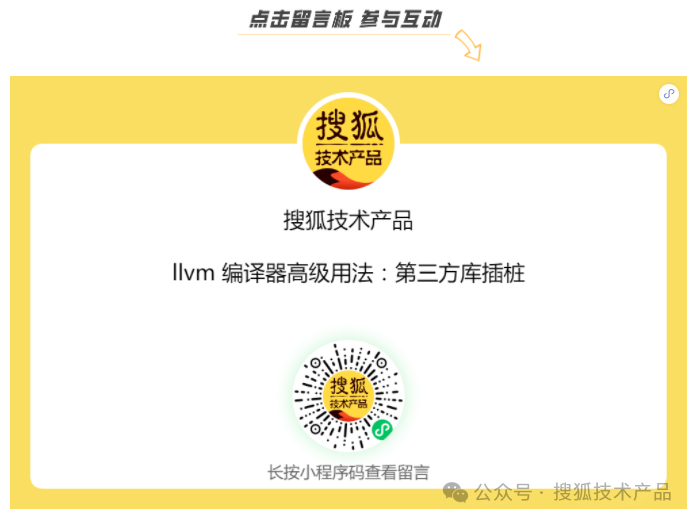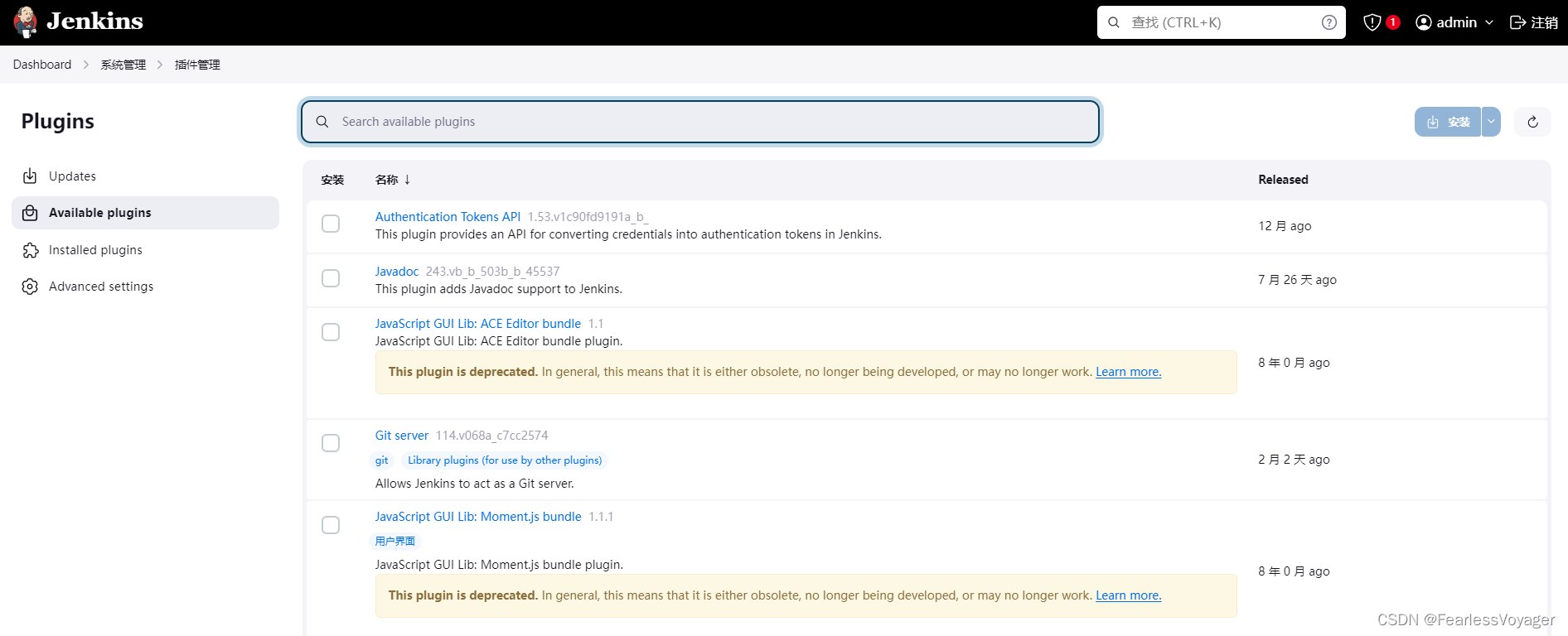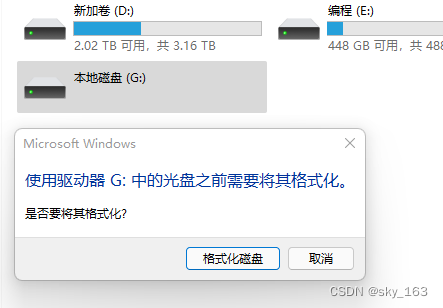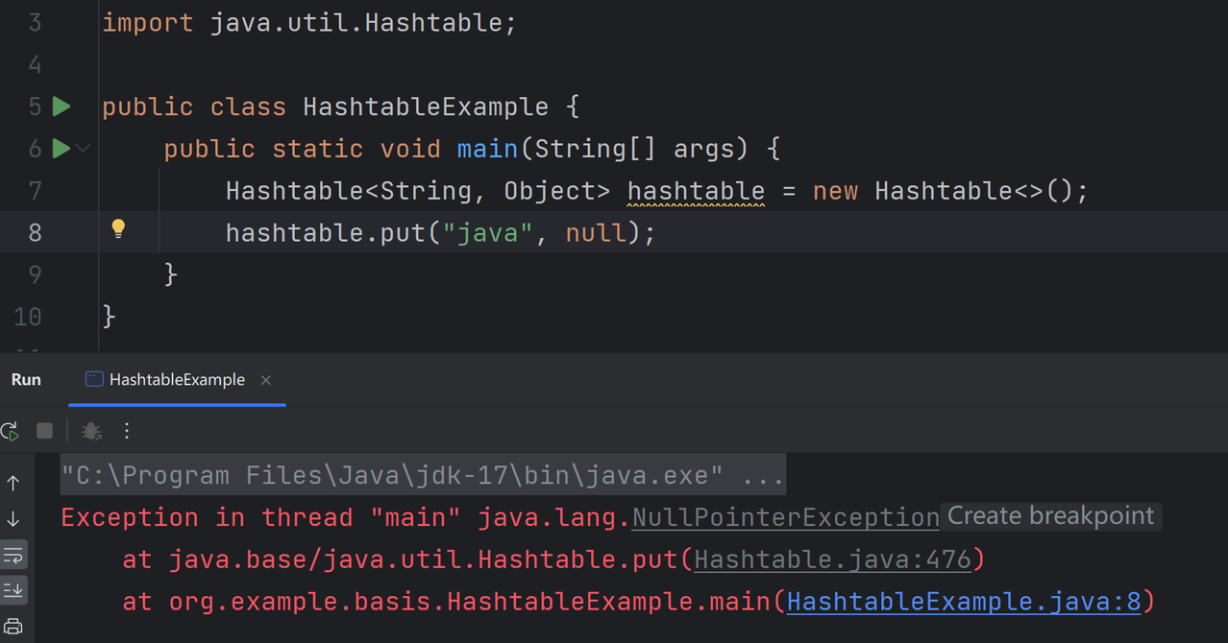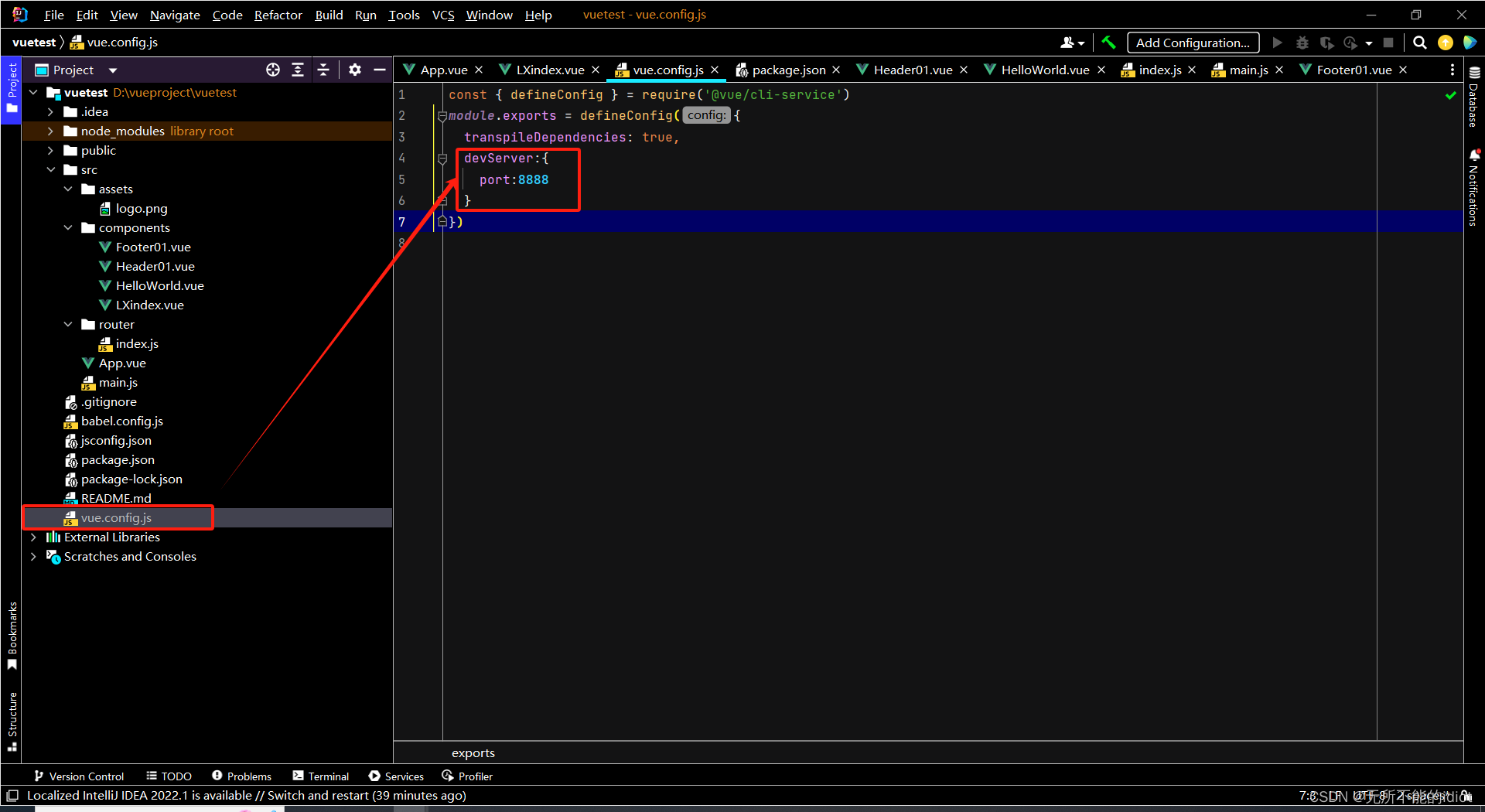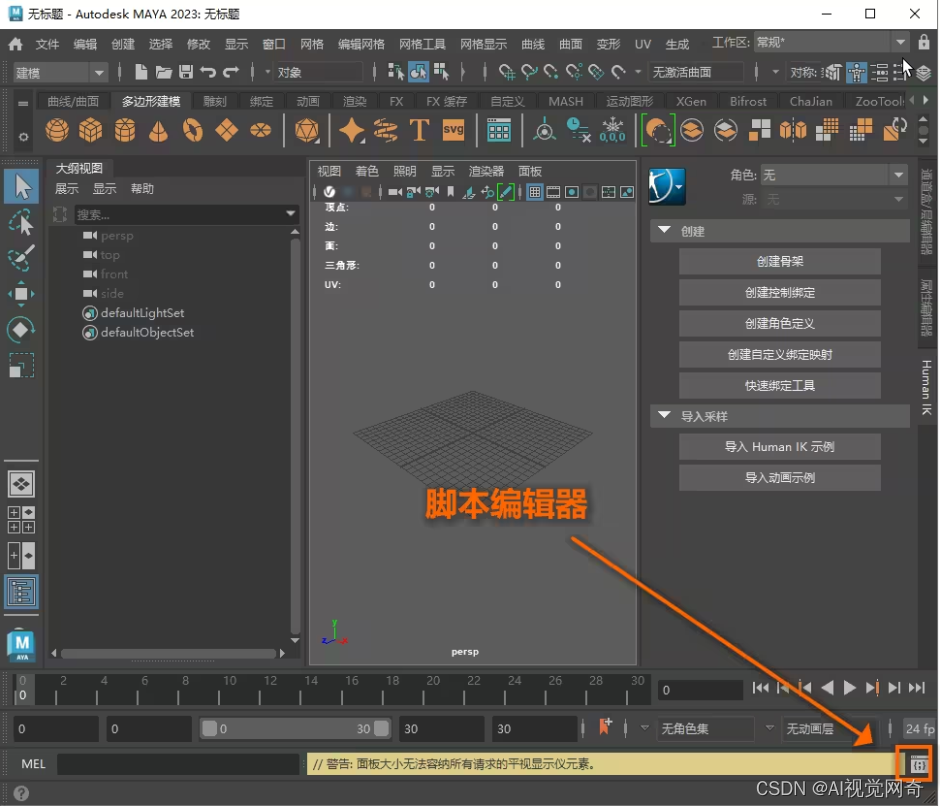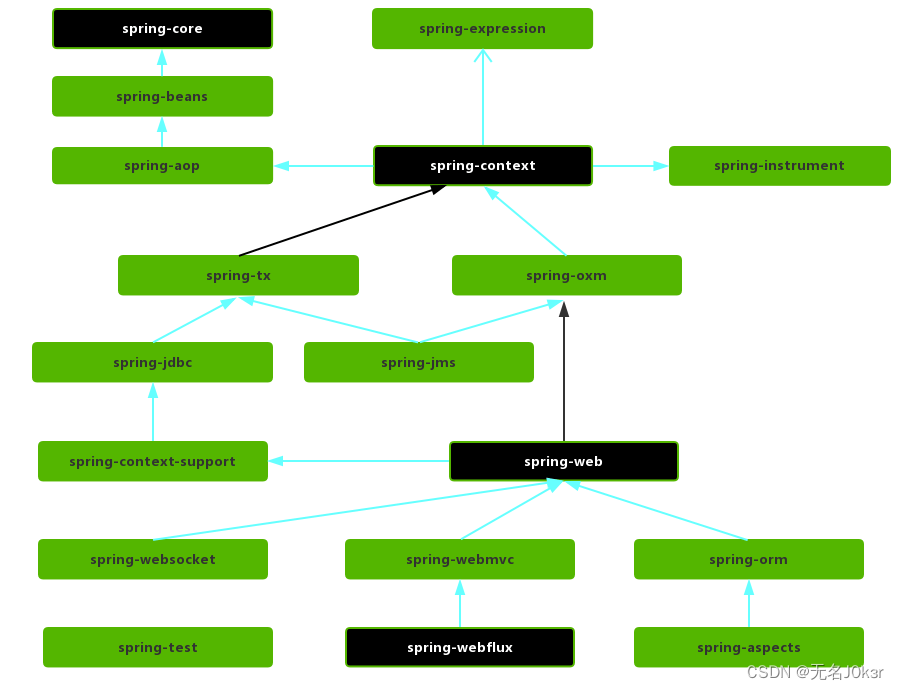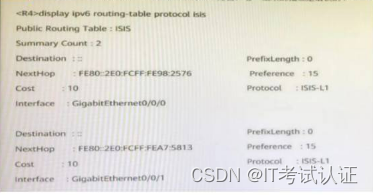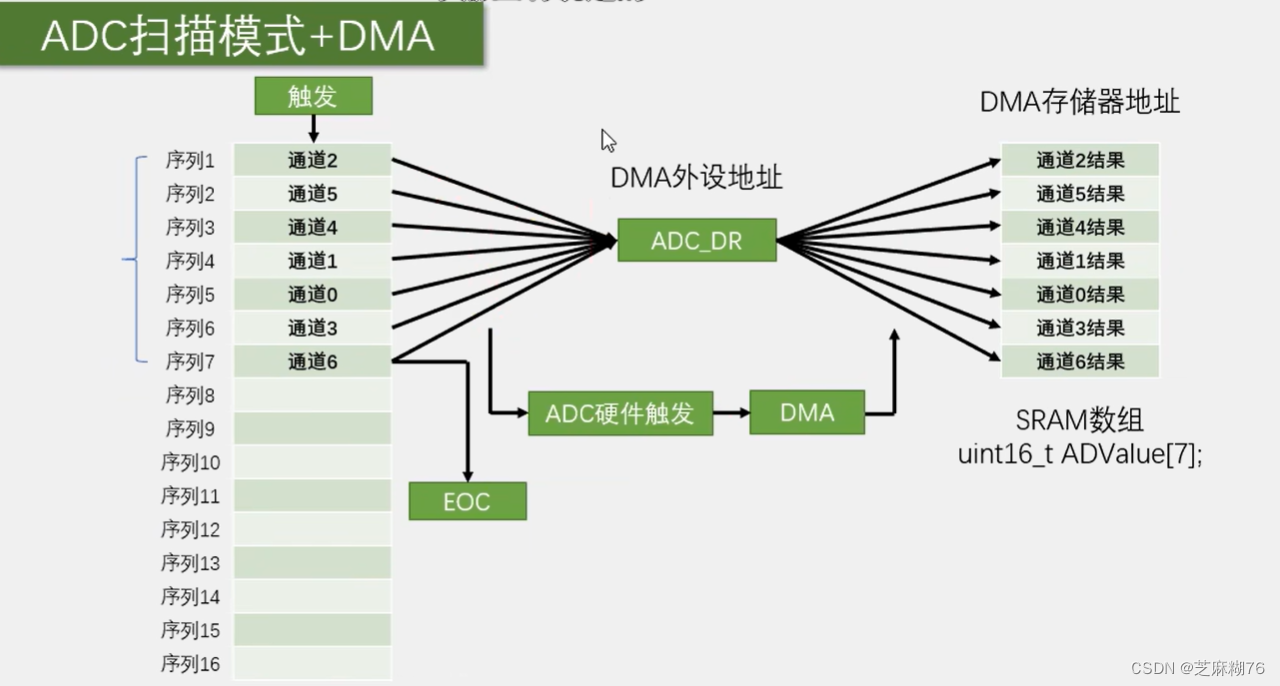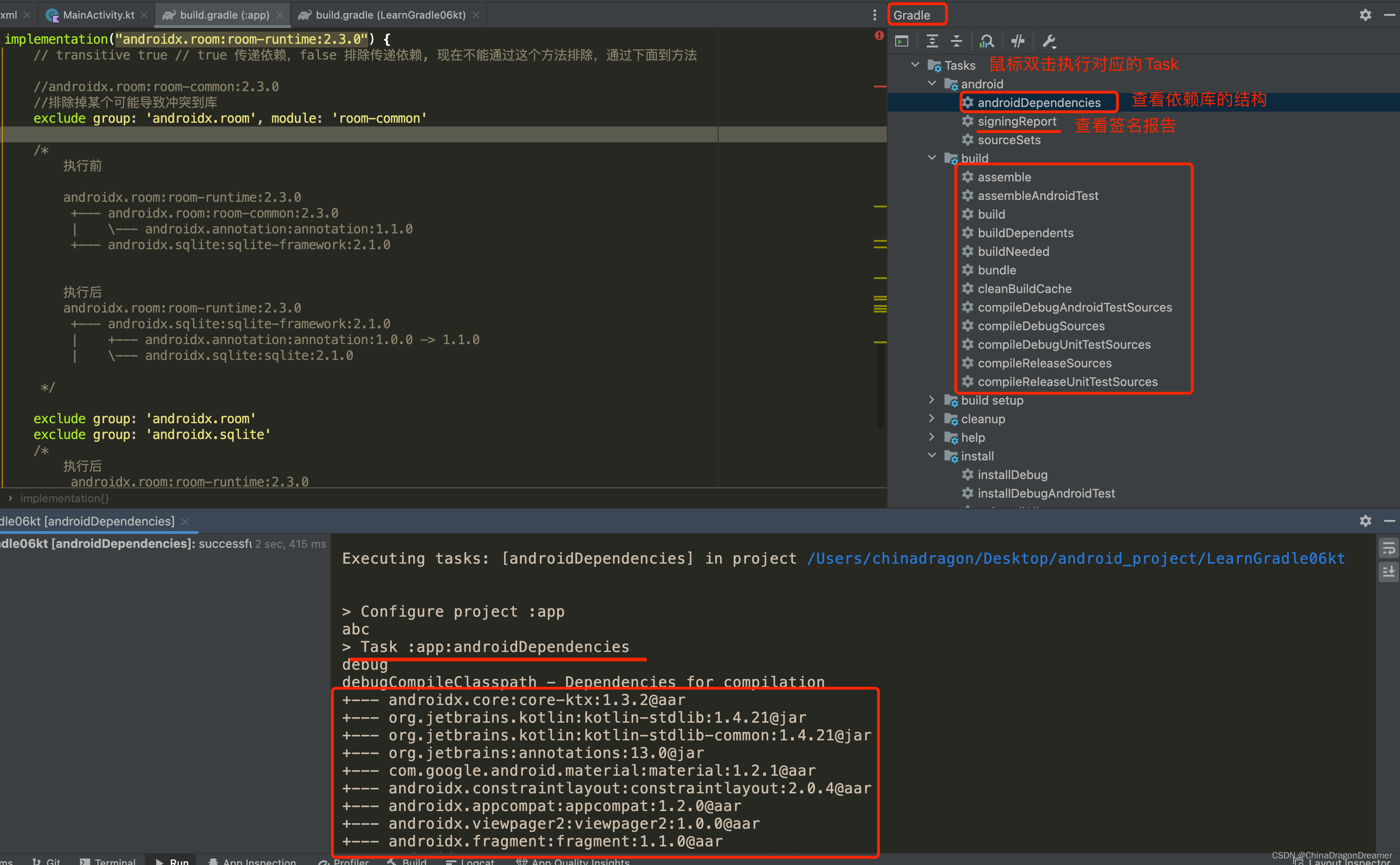

本文字数:16030字
预计阅读时间:40分钟
![]()
01
前言
Sentry是一个日志记录、错误上报、性能监控的开源框架,支持众多平台:
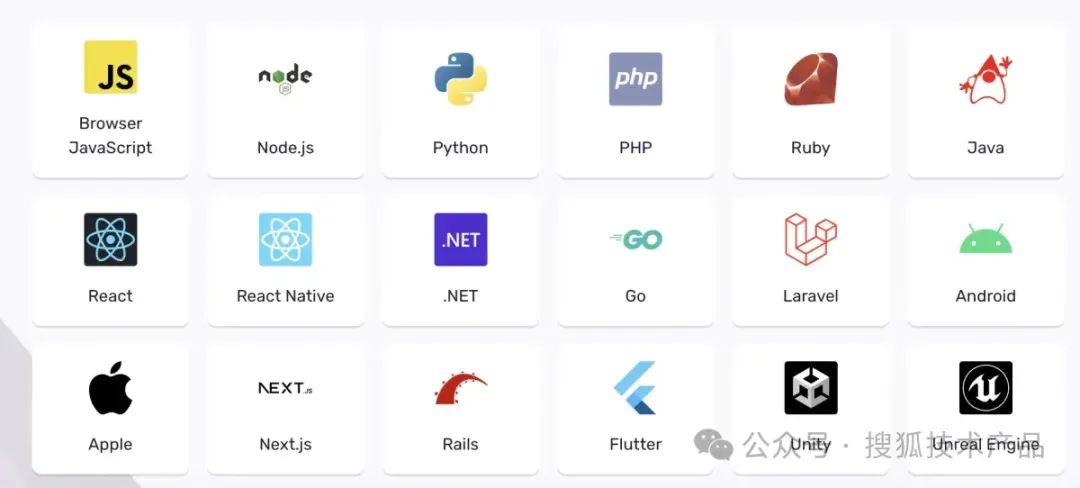
其使用方式在本文不进行说明了,大家可参照官方文档:https://docs.sentry.io/platforms/android/?original_referrer=https%3A%2F%2Fsentry.io%2F
目前大部分免费的三方APM平台限制较多,好用的又收费。在降本增效的大环境下,免费开源是开发者们的目标。因此开源的Sentry平台,在基础能力上已经满足了绝大多数开发场景。而对于想深入定制,打造自己APM平台的同学们来说,Sentry也是个可以依托并以此为基础进行改造的捷径。
本文将对Sentry Android SDK(6.31.0)进行源码解析,给大家一些改造拓展的思路。
02
基础结构说明
在讲解Sentry之前,先介绍一些基础的结构,方便之后的理解。
2.1.SentryEvent和SentryTransaction
先介绍两个基本概念,即SentryEvent和SentryTransaction。它们俩就是Sentry支持的事件,继承自同一个父类:SentryBaseEvent。简单来说其中我们在后台看到的Issues就是SentryEvent,Performance就是SentryTransaction。一次发送一个事件,每个SentryBaseEvent都有唯一的eventId。
2.2.Scope
Scope是保存与event一起发送的有用信息。如context,breadCrumb等。当设置了Scope里的某个属性,那么在整个Scope中都会将此属性赋值给event。
2.3.SentryClient
SentryClient是客户端用来真正处理各种事件发送逻辑的。比方说我们调用captureEvent(),最终的实现就是在SentryClient里。
2.4.Hub
Hub是用来管理Scope和SentryClient的。在Sentry初始化时,会创建Hub对象,Hub创建Scope和SentryClient并进行管理。了解了这些之后,我们来看源码。
03
初始化
在详细梳理初始化流程之前,我们把关键步骤梳理成图方便大家理解:
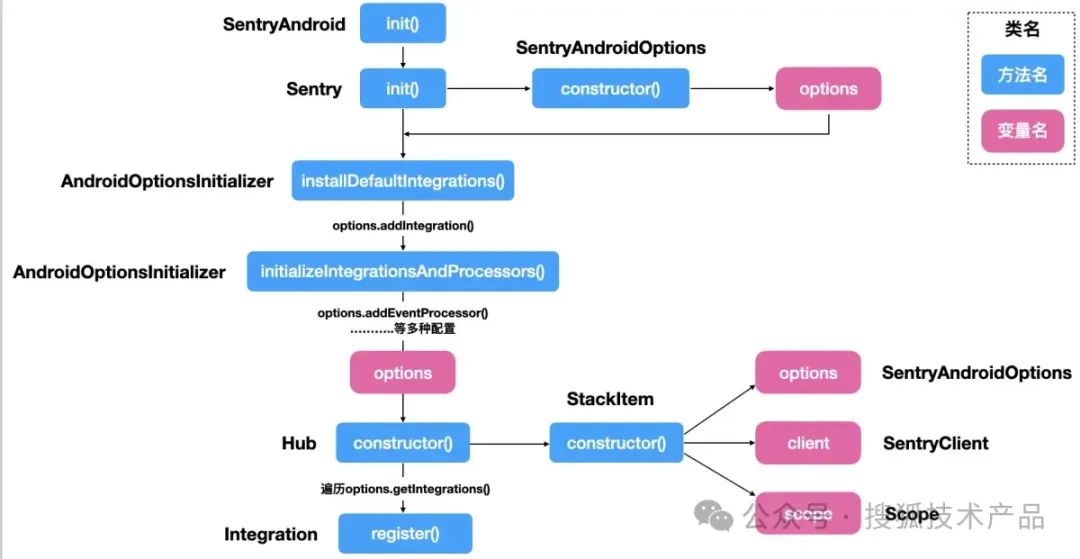
接下来我们分析具体的实现。
3.1.SentryAndroid.init()
我们先从初始化开始分析。SentryAndroid.java位于sentry-android-core这个包内。
从类的结构来看我们发现,SentryAndroid实际上只做了初始化这个操作:
//SentryAndroid.java
//Sentry initialization with a configuration handler and custom logger
//Params:
//context – Application. context
//logger – your custom logger that implements ILogger
//configuration – Sentry.OptionsConfiguration configuration handlerpublic static synchronized void init(@NotNull final Context context,@NotNull ILogger logger,@NotNull Sentry.OptionsConfiguration<SentryAndroidOptions> configuration) {// if SentryPerformanceProvider was disabled or removed, we set the App Start when// the SDK is called.AppStartState.getInstance().setAppStartTime(appStart, appStartTime);try {Sentry.init(OptionsContainer.create(SentryAndroidOptions.class),options -> {final LoadClass classLoader = new LoadClass();final boolean isTimberUpstreamAvailable =classLoader.isClassAvailable(TIMBER_CLASS_NAME, options);final boolean isFragmentUpstreamAvailable =classLoader.isClassAvailable(FRAGMENT_CLASS_NAME, options);final boolean isFragmentAvailable =(isFragmentUpstreamAvailable&& classLoader.isClassAvailable(SENTRY_FRAGMENT_INTEGRATION_CLASS_NAME, options));final boolean isTimberAvailable =(isTimberUpstreamAvailable&& classLoader.isClassAvailable(SENTRY_TIMBER_INTEGRATION_CLASS_NAME, options));final BuildInfoProvider buildInfoProvider = new BuildInfoProvider(logger);final LoadClass loadClass = new LoadClass();final ActivityFramesTracker activityFramesTracker =new ActivityFramesTracker(loadClass, options);AndroidOptionsInitializer.loadDefaultAndMetadataOptions(options, context, logger, buildInfoProvider);// We install the default integrations before the option configuration, so that the user// can remove any of them. Integrations will not evaluate the options immediately, but// will use them later, after being configured.AndroidOptionsInitializer.installDefaultIntegrations(context,options,buildInfoProvider,loadClass,activityFramesTracker,isFragmentAvailable,isTimberAvailable);configuration.configure(options);AndroidOptionsInitializer.initializeIntegrationsAndProcessors(options, context, buildInfoProvider, loadClass, activityFramesTracker);deduplicateIntegrations(options, isFragmentAvailable, isTimberAvailable);},true);final @NotNull IHub hub = Sentry.getCurrentHub();if (hub.getOptions().isEnableAutoSessionTracking()&& ContextUtils.isForegroundImportance(context)) {hub.addBreadcrumb(BreadcrumbFactory.forSession("session.start"));hub.startSession();}} catch (IllegalAccessException e) {
//..} catch (InstantiationException e) {
//...} catch (NoSuchMethodException e) {
//...} catch (InvocationTargetException e) {
//...}}我们看到在执行Sentry.init()之前先执行了:
AppStartState.getInstance().setAppStartTime(appStart, appStartTime);synchronized void setAppStartTime(final long appStartMillis, final @NotNull SentryDate appStartTime) {// method is synchronized because the SDK may by init. on a background thread.if (this.appStartTime != null && this.appStartMillis != null) {return;}this.appStartTime = appStartTime;this.appStartMillis = appStartMillis;}记录了appStartTime和appStartMillis。从类型上来看,一个是日期,一个是时间戳。我们看一下这两个变量的获取规则:
appStartMillis:
//SentryAndroid.java// SystemClock.uptimeMillis() isn't affected by phone provider or clock changes.private static final long appStart = SystemClock.uptimeMillis();记录了自开机以来的运行时间(毫秒级)。
appStartTime:
//SentryAndroid.java// static to rely on Class load init.private static final @NotNull SentryDate appStartTime =AndroidDateUtils.getCurrentSentryDateTime();//AndroidDateUtils.java
public final class AndroidDateUtils {private static final SentryDateProvider dateProvider = new SentryAndroidDateProvider();public static @NotNull SentryDate getCurrentSentryDateTime() {return dateProvider.now();}
}//SentryNanotimeDateProvider.java
public final class SentryNanotimeDateProvider implements SentryDateProvider {@Overridepublic SentryDate now() {return new SentryNanotimeDate();}
}//SentryNanotimeDate.javaprivate final @NotNull Date date;private final long nanos;public SentryNanotimeDate() {this(DateUtils.getCurrentDateTime(), System.nanoTime());}//DateUtils.javapublic static @NotNull Date getCurrentDateTime() {final Calendar calendar = Calendar.getInstance(TIMEZONE_UTC);return calendar.getTime();}到这里,我们可以看到:appStartTime记录了当前时区的日期,和当前的高精度时间戳(精确到纳秒级)。之后SentryAndroid主要执行了Sentry.init()方法。
我们继续分析Sentry.init()的实现。
3.2.Sentry.init()
Sentry.java位于sentry-6.31.0这个包下:
我们先来看看Sentry.init()的实现:
//Sentry.javapublic static <T extends SentryOptions> void init(final @NotNull OptionsContainer<T> clazz,final @NotNull OptionsConfiguration<T> optionsConfiguration,final boolean globalHubMode)throws IllegalAccessException, InstantiationException, NoSuchMethodException,InvocationTargetException {final T options = clazz.createInstance();applyOptionsConfiguration(optionsConfiguration, options);init(options, globalHubMode);}首先三个参数,类型分别是OptionsContainer,OptionsConfiguration和boolean。其中最后一个参数globalHubMode传的是true。然后调用applyOptionsConfiguration(),最后再执行init()方法。我们再来看看头两个参数是如何定义的。
3.2.1 final @NotNull OptionsContaine<T>clazz:**
//SentryAndroid.java
OptionsContainer.create(SentryAndroidOptions.class)//OptionsContainer.java
public final class OptionsContainer<T> {public @NotNull static <T> OptionsContainer<T> create(final @NotNull Class<T> clazz) {return new OptionsContainer<>(clazz);}private final @NotNull Class<T> clazz;private OptionsContainer(final @NotNull Class<T> clazz) {super();this.clazz = clazz;}public @NotNull T createInstance()throws InstantiationException, IllegalAccessException, NoSuchMethodException,InvocationTargetException {return clazz.getDeclaredConstructor().newInstance();}
}OptionsContainer.create()传的是SentryAndroidOptions这个class,返回的是OptionsContainer<SentryAndroidOptions>。在Sentry.java中调用clazz.createInstance()方法执行了SentryAndroidOptions的构造方法:
//SentryAndroidOptions.javapublic SentryAndroidOptions() {setSentryClientName(BuildConfig.SENTRY_ANDROID_SDK_NAME + "/" + BuildConfig.VERSION_NAME);setSdkVersion(createSdkVersion());setAttachServerName(false);// enable scope sync for Android by defaultsetEnableScopeSync(true);}我们看做了一些Android相关的基础配置。SentryAndroidOptions的父类OptionsContainer的构造方法如下:
//SentryOptions.javaprivate SentryOptions(final boolean empty) {if (!empty) {// SentryExecutorService should be initialized before any// SendCachedEventFireAndForgetIntegrationexecutorService = new SentryExecutorService();// UncaughtExceptionHandlerIntegration should be inited before any other Integration.// if there's an error on the setup, we are able to capture itintegrations.add(new UncaughtExceptionHandlerIntegration());integrations.add(new ShutdownHookIntegration());eventProcessors.add(new MainEventProcessor(this));eventProcessors.add(new DuplicateEventDetectionEventProcessor(this));if (Platform.isJvm()) {eventProcessors.add(new SentryRuntimeEventProcessor());}setSentryClientName(BuildConfig.SENTRY_JAVA_SDK_NAME + "/" + BuildConfig.VERSION_NAME);setSdkVersion(createSdkVersion());addPackageInfo();}}3.2.1.1.SentryExecutorService
首先初始化了一个SentryExecutorService:
//SentryExecutorService.javaSentryExecutorService() {this(Executors.newSingleThreadScheduledExecutor(new SentryExecutorServiceThreadFactory()));}//SentryExecutorService.java@Overridepublic @NotNull Future<?> submit(final @NotNull Runnable runnable) {return executorService.submit(runnable);}这个service开启了一个新线程执行了submit()方法,我们追踪一下代码发现这个方法有多处调用,最主要的是SendCachedEnvelopeFireAndForgetIntegration调用了,而SendCachedEnvelopeFireAndForgetIntegration的作用是在App启动的时候发送在cache中的event用的。
我们继续看SentryOptions.java的构造方法,发现会为integrations列表添加各种Integration,我们看一个最常见的UncaughtExceptionHandlerIntegration来分析,从命名上来看这个Integration就是用来抓抛出来的异常用的。
3.2.1.2. Integration
//UncaughtExceptionHandlerIntegration.javapublic UncaughtExceptionHandlerIntegration() {this(UncaughtExceptionHandler.Adapter.getInstance());}UncaughtExceptionHandlerIntegration(final @NotNull UncaughtExceptionHandler threadAdapter) {this.threadAdapter = Objects.requireNonNull(threadAdapter, "threadAdapter is required.");}//UncaughtExceptionHandler.java
interface UncaughtExceptionHandler {Thread.UncaughtExceptionHandler getDefaultUncaughtExceptionHandler();void setDefaultUncaughtExceptionHandler(@Nullable Thread.UncaughtExceptionHandler handler);final class Adapter implements UncaughtExceptionHandler {static UncaughtExceptionHandler getInstance() {return Adapter.INSTANCE;}private static final Adapter INSTANCE = new Adapter();private Adapter() {}@Overridepublic Thread.UncaughtExceptionHandler getDefaultUncaughtExceptionHandler() {return Thread.getDefaultUncaughtExceptionHandler();}@Overridepublic void setDefaultUncaughtExceptionHandler(final @Nullable Thread.UncaughtExceptionHandler handler) {Thread.setDefaultUncaughtExceptionHandler(handler);}}
}其中Adapter实现了UncaughtExceptionHandler接口。我们回到UncaughtExceptionHandlerIntegration.java,它实现了Integration和Thread.UncaughtExceptionHandler接口,其中Integration的定义如下:
//Integration.java
public interface Integration extends IntegrationName {
/**
* Registers an integration
*
* @param hub the Hub
* @param options the options
*/
void register(@NotNull IHub hub, @NotNull SentryOptions options);
}
只有一个register()方法,我们回到UncaughtExceptionHandlerIntegration,看一下它的结构:
先看一下register()都做了什么:
//UncaughtExceptionHandlerIntegration.java@Overridepublic final void register(final @NotNull IHub hub, final @NotNull SentryOptions options) {if (registered) {
//...return;}registered = true;this.hub = Objects.requireNonNull(hub, "Hub is required");this.options = Objects.requireNonNull(options, "SentryOptions is required");
//...if (this.options.isEnableUncaughtExceptionHandler()) {final Thread.UncaughtExceptionHandler currentHandler =threadAdapter.getDefaultUncaughtExceptionHandler();if (currentHandler != null) {
//...defaultExceptionHandler = currentHandler;}threadAdapter.setDefaultUncaughtExceptionHandler(this);
//...}}初始化了hub和options。最主要的逻辑就是注册了Thread.UncaughtExceptionHandler等待异常抛出时作处理。那么我们再来看uncaughtException()的实现:
//UncaughtExceptionHandlerIntegration.java@Overridepublic void uncaughtException(Thread thread, Throwable thrown) {if (options != null && hub != null) {options.getLogger().log(SentryLevel.INFO, "Uncaught exception received.");try {final UncaughtExceptionHint exceptionHint =new UncaughtExceptionHint(options.getFlushTimeoutMillis(), options.getLogger());final Throwable throwable = getUnhandledThrowable(thread, thrown);final SentryEvent event = new SentryEvent(throwable);event.setLevel(SentryLevel.FATAL);final Hint hint = HintUtils.createWithTypeCheckHint(exceptionHint);final @NotNull SentryId sentryId = hub.captureEvent(event, hint);final boolean isEventDropped = sentryId.equals(SentryId.EMPTY_ID);final EventDropReason eventDropReason = HintUtils.getEventDropReason(hint);
//...} catch (Throwable e) {
//...}if (defaultExceptionHandler != null) {options.getLogger().log(SentryLevel.INFO, "Invoking inner uncaught exception handler.");defaultExceptionHandler.uncaughtException(thread, thrown);} else {if (options.isPrintUncaughtStackTrace()) {thrown.printStackTrace();}}}}主要逻辑是创建了一个SentryEvent并将Throwable包进去,然后调用hub.captureEvent(event, hint)(之后再讲),将event上报到Sentry。到此,我们知道了UncaughtExceptionHandlerIntegration的作用就是为了将异常上报给Sentry后台的,而它实现了Integration接口,会在合适的时候将自己注册给Sentry。其他实现了Integration接口的类,目的也是将自己注册给Sentry进行绑定,并提供相应的方法去hook一些自己想要的逻辑。Integration的注册时机我们之后再讲,接下来看回到SentryOptions.java:
//SentryOptions.javaprivate SentryOptions(final boolean empty) {if (!empty) {// SentryExecutorService should be initialized before any// SendCachedEventFireAndForgetIntegrationexecutorService = new SentryExecutorService();// UncaughtExceptionHandlerIntegration should be inited before any other Integration.// if there's an error on the setup, we are able to capture itintegrations.add(new UncaughtExceptionHandlerIntegration());integrations.add(new ShutdownHookIntegration());eventProcessors.add(new MainEventProcessor(this));eventProcessors.add(new DuplicateEventDetectionEventProcessor(this));if (Platform.isJvm()) {eventProcessors.add(new SentryRuntimeEventProcessor());}setSentryClientName(BuildConfig.SENTRY_JAVA_SDK_NAME + "/" + BuildConfig.VERSION_NAME);setSdkVersion(createSdkVersion());addPackageInfo();}}看eventProcessors.add()都干了什么,以MainEventProcessor为例。
3.2.1.3.EventProcessor
MainEventProcessor实现了EventProcessor接口,EventProcessor是为SentryEvent或SentryTransaction服务的,目的是在发送事件时插入一些附属信息://EventProcessor.java
public interface EventProcessor {
/**
* May mutate or drop a SentryEvent
*
* @param event the SentryEvent
* @param hint the Hint
* @return the event itself, a mutated SentryEvent or null
*/
@Nullable
default SentryEvent process(@NotNull SentryEvent event, @NotNull Hint hint) {
return event;
}
/**
* May mutate or drop a SentryTransaction
*
* @param transaction the SentryTransaction
* @param hint the Hint
* @return the event itself, a mutated SentryTransaction or null
*/
@Nullable
default SentryTransaction process(@NotNull SentryTransaction transaction, @NotNull Hint hint) {
return transaction;
}
}
两个process()方法分别作用于SentryEvent或SentryTransaction。回到MainEventProcessor,看看process()的实现:
//MainEventProcessor.java@Overridepublic @NotNull SentryEvent process(final @NotNull SentryEvent event, final @NotNull Hint hint) {setCommons(event);setExceptions(event);setDebugMeta(event);setModules(event);if (shouldApplyScopeData(event, hint)) {processNonCachedEvent(event);setThreads(event, hint);}return event;}@Overridepublic @NotNull SentryTransaction process(final @NotNull SentryTransaction transaction, final @NotNull Hint hint) {setCommons(transaction);setDebugMeta(transaction);if (shouldApplyScopeData(transaction, hint)) {processNonCachedEvent(transaction);}return transaction;}逻辑很简单,就是做默认配置用的,通常如果自定义了一些信息就走自定义的,没有的话就配置默认信息。process()的调用时机是发送一个事件到Sentry后台时将基础信息进行配置,代码我们之后再来看。回到Sentry.init()方法:
//Sentry.javapublic static <T extends SentryOptions> void init(final @NotNull OptionsContainer<T> clazz,final @NotNull OptionsConfiguration<T> optionsConfiguration,final boolean globalHubMode)throws IllegalAccessException, InstantiationException, NoSuchMethodException,InvocationTargetException {final T options = clazz.createInstance();applyOptionsConfiguration(optionsConfiguration, options);init(options, globalHubMode);}clazz怎么创建的,并且clazz.createInstance()都干了什么我们就清楚了。
总结一下:
1.初始化了SentryAndroidOptions做各种基础配置并返回;
2.定义了各种Integration和EventProcessor,hook需要的时机,获取基础参数,为之后发送事件作准备。接下来我们看一下optionsConfiguration。
3.2.2 @NotNullOptionsConfiguration<T>optionsConfiguration
OptionsConfiguration是个接口,applyOptionsConfiguration()调用其configure()方法做一些基础的配置,所以回到SentryAndroid.java:
//SentryAndroid.javaoptions -> {final LoadClass classLoader = new LoadClass();final boolean isTimberUpstreamAvailable =classLoader.isClassAvailable(TIMBER_CLASS_NAME, options);final boolean isFragmentUpstreamAvailable =classLoader.isClassAvailable(FRAGMENT_CLASS_NAME, options);final boolean isFragmentAvailable =(isFragmentUpstreamAvailable&& classLoader.isClassAvailable(SENTRY_FRAGMENT_INTEGRATION_CLASS_NAME, options));final boolean isTimberAvailable =(isTimberUpstreamAvailable&& classLoader.isClassAvailable(SENTRY_TIMBER_INTEGRATION_CLASS_NAME, options));final BuildInfoProvider buildInfoProvider = new BuildInfoProvider(logger);final LoadClass loadClass = new LoadClass();final ActivityFramesTracker activityFramesTracker =new ActivityFramesTracker(loadClass, options);AndroidOptionsInitializer.loadDefaultAndMetadataOptions(options, context, logger, buildInfoProvider);// We install the default integrations before the option configuration, so that the user// can remove any of them. Integrations will not evaluate the options immediately, but// will use them later, after being configured.AndroidOptionsInitializer.installDefaultIntegrations(context,options,buildInfoProvider,loadClass,activityFramesTracker,isFragmentAvailable,isTimberAvailable);configuration.configure(options);AndroidOptionsInitializer.initializeIntegrationsAndProcessors(options, context, buildInfoProvider, loadClass, activityFramesTracker);deduplicateIntegrations(options, isFragmentAvailable, isTimberAvailable);},前面的几个isClassAvailable()方法就是检查是否能找到那几个类,正常情况下返回true。BuildInfoProvider是为了读取android.os.Build下的信息,包括判断是否为模拟器:

ActivityFramesTracker是利用FrameMetricsAggregator来收集app帧渲染的时间从而观察是否有掉帧的情况发生。我们继续看AndroidOptionsInitializer.loadDefaultAndMetadataOptions()的实现:
//AndroidOptionsInitializer.javastatic void loadDefaultAndMetadataOptions(final @NotNull SentryAndroidOptions options,@NotNull Context context,final @NotNull ILogger logger,final @NotNull BuildInfoProvider buildInfoProvider) {Objects.requireNonNull(context, "The context is required.");// it returns null if ContextImpl, so let's check for nullabilityif (context.getApplicationContext() != null) {context = context.getApplicationContext();}Objects.requireNonNull(options, "The options object is required.");Objects.requireNonNull(logger, "The ILogger object is required.");// Firstly set the logger, if `debug=true` configured, logging can start asap.options.setLogger(logger);options.setDateProvider(new SentryAndroidDateProvider());ManifestMetadataReader.applyMetadata(context, options, buildInfoProvider);initializeCacheDirs(context, options);readDefaultOptionValues(options, context, buildInfoProvider);}还是继续为SentryAndroidOptions做基础的配置。包括设置时间日期,读取Manifest里的配置信息,初始化cache目录和Android独有信息,如包名等。接着调用AndroidOptionsInitializer.installDefaultIntegrations()方法:
//AndroidOptionsInitializer.javastatic void installDefaultIntegrations(final @NotNull Context context,final @NotNull SentryAndroidOptions options,final @NotNull BuildInfoProvider buildInfoProvider,final @NotNull LoadClass loadClass,final @NotNull ActivityFramesTracker activityFramesTracker,final boolean isFragmentAvailable,final boolean isTimberAvailable) {// Integration MUST NOT cache option values in ctor, as they will be configured later by the// user// read the startup crash marker here to avoid doing double-IO for the SendCachedEnvelope// integrations belowLazyEvaluator<Boolean> startupCrashMarkerEvaluator =new LazyEvaluator<>(() -> AndroidEnvelopeCache.hasStartupCrashMarker(options));options.addIntegration(new SendCachedEnvelopeIntegration(new SendFireAndForgetEnvelopeSender(() -> options.getCacheDirPath()),startupCrashMarkerEvaluator));// Integrations are registered in the same order. NDK before adding Watch outbox,// because sentry-native move files around and we don't want to watch that.final Class<?> sentryNdkClass =isNdkAvailable(buildInfoProvider)? loadClass.loadClass(SENTRY_NDK_CLASS_NAME, options.getLogger()): null;options.addIntegration(new NdkIntegration(sentryNdkClass));// this integration uses android.os.FileObserver, we can't move to sentry// before creating a pure java impl.options.addIntegration(EnvelopeFileObserverIntegration.getOutboxFileObserver());// Send cached envelopes from outbox path// this should be executed after NdkIntegration because sentry-native move files on init.// and we'd like to send them right awayoptions.addIntegration(new SendCachedEnvelopeIntegration(new SendFireAndForgetOutboxSender(() -> options.getOutboxPath()),startupCrashMarkerEvaluator));// AppLifecycleIntegration has to be installed before AnrIntegration, because AnrIntegration// relies on AppState set by itoptions.addIntegration(new AppLifecycleIntegration());options.addIntegration(AnrIntegrationFactory.create(context, buildInfoProvider));// registerActivityLifecycleCallbacks is only available if Context is an AppContextif (context instanceof Application) {options.addIntegration(new ActivityLifecycleIntegration((Application) context, buildInfoProvider, activityFramesTracker));options.addIntegration(new CurrentActivityIntegration((Application) context));options.addIntegration(new UserInteractionIntegration((Application) context, loadClass));if (isFragmentAvailable) {options.addIntegration(new FragmentLifecycleIntegration((Application) context, true, true));}} else {options.getLogger().log(SentryLevel.WARNING,"ActivityLifecycle, FragmentLifecycle and UserInteraction Integrations need an Application class to be installed.");}if (isTimberAvailable) {options.addIntegration(new SentryTimberIntegration());}options.addIntegration(new AppComponentsBreadcrumbsIntegration(context));options.addIntegration(new SystemEventsBreadcrumbsIntegration(context));options.addIntegration(new NetworkBreadcrumbsIntegration(context, buildInfoProvider, options.getLogger()));options.addIntegration(new TempSensorBreadcrumbsIntegration(context));options.addIntegration(new PhoneStateBreadcrumbsIntegration(context));}我们发现为options添加了一堆Integration。之前我们知道已经添加了一个UncaughtExceptionHandlerIntegration用来捕获Java异常,我们再一个个看看,弄清楚Sentry都给Android带来了哪些额外的能力。
(1)SendCachedEnvelopeIntegration:SendCachedEnvelopeIntegration有两处。一个是SendFireAndForgetEnvelopeSender,这个我们之前提到过,在App启动的时候将cache中的event发送出去。另一个是SendFireAndForgetOutboxSender,还在发件箱里未被发送的event。
(2)NdkIntegration:顾名思义,就是抓取NDK的异常。其中sentryNdkClass去的是上面定义的SENTRY_NDK_CLASS_NAME这个类,即io.sentry.android.ndk.SentryNdk。SentryNdk有个init()方法:
//SentryNdk.javapublic static void init(@NotNull final SentryAndroidOptions options) {SentryNdkUtil.addPackage(options.getSdkVersion());initSentryNative(options);// only add scope sync observer if the scope sync is enabled.if (options.isEnableScopeSync()) {options.addScopeObserver(new NdkScopeObserver(options));}options.setDebugImagesLoader(new DebugImagesLoader(options, new NativeModuleListLoader()));}将options传入。initSentryNative()是个native方法,用来做初始化。接着为options添加IScopeObserver用来为当前Scope设置参数。这个init()方法是在NdkIntegration的register()中执行的:
//NdkIntegration.java@Overridepublic final void register(final @NotNull IHub hub, final @NotNull SentryOptions options) {Objects.requireNonNull(hub, "Hub is required");this.options =Objects.requireNonNull((options instanceof SentryAndroidOptions) ? (SentryAndroidOptions) options : null,"SentryAndroidOptions is required");final boolean enabled = this.options.isEnableNdk();this.options.getLogger().log(SentryLevel.DEBUG, "NdkIntegration enabled: %s", enabled);// Note: `hub` isn't used here because the NDK integration writes files to disk which are picked// up by another integration (EnvelopeFileObserverIntegration).if (enabled && sentryNdkClass != null) {
//...try {final Method method = sentryNdkClass.getMethod("init", SentryAndroidOptions.class);final Object[] args = new Object[1];args[0] = this.options;method.invoke(null, args);
//...addIntegrationToSdkVersion();} catch (NoSuchMethodException e) {
//...} catch (Throwable e) {
//...}} else {disableNdkIntegration(this.options);}}我们可以看到,通过反射的方式,将options传给Sentryndk的init()方法。
(3)EnvelopeFileObserverIntegration:在发送Event到Sentry后台之前,会先把它保存到本地。这个Integration时用来监听文件读写完毕后,进行网络请求,具体流程就不进行分析了。
(4)AppLifecycleIntegration监听App前后台切换,并添加BreadCrumb给Sentry,register()的主要实现如下:
//AppLifecycleIntegration.java@Overridepublic void register(final @NotNull IHub hub, final @NotNull SentryOptions options) {Objects.requireNonNull(hub, "Hub is required");
//...if (this.options.isEnableAutoSessionTracking()|| this.options.isEnableAppLifecycleBreadcrumbs()) {try {Class.forName("androidx.lifecycle.DefaultLifecycleObserver");Class.forName("androidx.lifecycle.ProcessLifecycleOwner");if (AndroidMainThreadChecker.getInstance().isMainThread()) {addObserver(hub);} else {
//...}} catch (ClassNotFoundException e) {
//...} catch (IllegalStateException e) {
//...}}}//AppLifecycleIntegration.javaprivate void addObserver(final @NotNull IHub hub) {
//...watcher =new LifecycleWatcher(hub,this.options.getSessionTrackingIntervalMillis(),this.options.isEnableAutoSessionTracking(),this.options.isEnableAppLifecycleBreadcrumbs());try {ProcessLifecycleOwner.get().getLifecycle().addObserver(watcher);
//...addIntegrationToSdkVersion();} catch (Throwable e) {
//...}}//LifecycleWatcher.java@Overridepublic void onStart(final @NotNull LifecycleOwner owner) {startSession();addAppBreadcrumb("foreground");// Consider using owner.getLifecycle().getCurrentState().isAtLeast(Lifecycle.State.RESUMED);// in the future.AppState.getInstance().setInBackground(false);}@Overridepublic void onStop(final @NotNull LifecycleOwner owner) {if (enableSessionTracking) {final long currentTimeMillis = currentDateProvider.getCurrentTimeMillis();this.lastUpdatedSession.set(currentTimeMillis);scheduleEndSession();}AppState.getInstance().setInBackground(true);addAppBreadcrumb("background");}(5)AnrIntegrationFactory.create():ANR在Android 11之前和之后的监测方式不同:
//AnrIntegrationFactory.java
public final class AnrIntegrationFactory {@NotNullpublic static Integration create(final @NotNull Context context, final @NotNull BuildInfoProvider buildInfoProvider) {if (buildInfoProvider.getSdkInfoVersion() >= Build.VERSION_CODES.R) {return new AnrV2Integration(context);} else {return new AnrIntegration(context);}}
}先看Android 11及之后的处理方式:
//AnrV2Integration.java@SuppressLint("NewApi") // we do the check in the AnrIntegrationFactory@Overridepublic void register(@NotNull IHub hub, @NotNull SentryOptions options) {
//...if (this.options.isAnrEnabled()) {try {options.getExecutorService().submit(new AnrProcessor(context, hub, this.options, dateProvider));} catch (Throwable e) {//...}options.getLogger().log(SentryLevel.DEBUG, "AnrV2Integration installed.");addIntegrationToSdkVersion();}}创建了一个AnrProcessor,实现了Runnable接口:
//AnrProcessor.java@SuppressLint("NewApi") // we check this in AnrIntegrationFactory@Overridepublic void run() {final ActivityManager activityManager =(ActivityManager) context.getSystemService(Context.ACTIVITY_SERVICE);final List<ApplicationExitInfo> applicationExitInfoList =activityManager.getHistoricalProcessExitReasons(null, 0, 0);
//...final IEnvelopeCache cache = options.getEnvelopeDiskCache();if (cache instanceof EnvelopeCache) {if (options.isEnableAutoSessionTracking()&& !((EnvelopeCache) cache).waitPreviousSessionFlush()) {
//...((EnvelopeCache) cache).flushPreviousSession();}}// making a deep copy as we're modifying the listfinal List<ApplicationExitInfo> exitInfos = new ArrayList<>(applicationExitInfoList);final @Nullable Long lastReportedAnrTimestamp = AndroidEnvelopeCache.lastReportedAnr(options);ApplicationExitInfo latestAnr = null;for (ApplicationExitInfo applicationExitInfo : exitInfos) {if (applicationExitInfo.getReason() == ApplicationExitInfo.REASON_ANR) {latestAnr = applicationExitInfo;// remove it, so it's not reported twiceexitInfos.remove(applicationExitInfo);break;}}
//...if (options.isReportHistoricalAnrs()) {reportNonEnrichedHistoricalAnrs(exitInfos, lastReportedAnrTimestamp);}reportAsSentryEvent(latestAnr, true);}不去深究代码的细节,只看方案,我们可以看到Android 11及以上是通过ActivityManager.getHistoricalProcessExitReasons()来得到Anr的相关信息,最终通过reportAsSentryEvent()来进行上报:
private void reportAsSentryEvent(final @NotNull ApplicationExitInfo exitInfo, final boolean shouldEnrich) {final long anrTimestamp = exitInfo.getTimestamp();final boolean isBackground =exitInfo.getImportance() != ActivityManager.RunningAppProcessInfo.IMPORTANCE_FOREGROUND;final ParseResult result = parseThreadDump(exitInfo, isBackground);
//...final AnrV2Hint anrHint =new AnrV2Hint(options.getFlushTimeoutMillis(),options.getLogger(),anrTimestamp,shouldEnrich,isBackground);final Hint hint = HintUtils.createWithTypeCheckHint(anrHint);final SentryEvent event = new SentryEvent();if (result.type == ParseResult.Type.ERROR) {final Message sentryMessage = new Message();sentryMessage.setFormatted("Sentry Android SDK failed to parse system thread dump for "+ "this ANR. We recommend enabling [SentryOptions.isAttachAnrThreadDump] option "+ "to attach the thread dump as plain text and report this issue on GitHub.");event.setMessage(sentryMessage);} else if (result.type == ParseResult.Type.DUMP) {event.setThreads(result.threads);}event.setLevel(SentryLevel.FATAL);event.setTimestamp(DateUtils.getDateTime(anrTimestamp));if (options.isAttachAnrThreadDump()) {if (result.dump != null) {hint.setThreadDump(Attachment.fromThreadDump(result.dump));}}final @NotNull SentryId sentryId = hub.captureEvent(event, hint);final boolean isEventDropped = sentryId.equals(SentryId.EMPTY_ID);
//...}这段代码我们先不去看具体的实现,它的作用就是将Anr信息封装成Hint,再构造SentryEvent,通过hub.captureEvent(event, hint)进行上报。我们再来看看Android 11以下是如何处理的:
//AnrIntegrationFactory.javapublic static Integration create(final @NotNull Context context, final @NotNull BuildInfoProvider buildInfoProvider) {if (buildInfoProvider.getSdkInfoVersion() >= Build.VERSION_CODES.R) {return new AnrV2Integration(context);} else {return new AnrIntegration(context);}}
}//AnrIntegration.javaprivate void register(final @NotNull IHub hub, final @NotNull SentryAndroidOptions options) {
//...if (options.isAnrEnabled()) {synchronized (watchDogLock) {if (anrWatchDog == null) {
//...anrWatchDog =new ANRWatchDog(options.getAnrTimeoutIntervalMillis(),options.isAnrReportInDebug(),error -> reportANR(hub, options, error),options.getLogger(),context);anrWatchDog.start();options.getLogger().log(SentryLevel.DEBUG, "AnrIntegration installed.");addIntegrationToSdkVersion();}}}}封装了一个ANRWatchDog继承了Thread,这个方案就是传统的Anr监测方案:启动一个异步线程,在while循环中,使用主线程的Handler发送一个消息,线程休眠指定的时间5s,当线程唤醒之后,如果发送的消息还没被主线程执行,即认为主线程发生了卡顿。具体流程不再描述了,最终也是将Anr信息封装成Hint,再构造SentryEvent,通过hub.captureEvent(event, hint)进行上报。
(6)ActivityLifecycleIntegration:实现了Application.ActivityLifecycleCallbacks用来监测Activity生命周期。ActivityLifecycleIntegration主要干了三件事:
1.计算冷启动时间;
2.用来将这Activity的生命周期变化及信息添加到BreadCrumb中去;
3.计算Activity的启动时间。
先看一下register()方法的实现:
//ActivityLifecycleIntegration.java@Overridepublic void register(final @NotNull IHub hub, final @NotNull SentryOptions options) {this.options =Objects.requireNonNull((options instanceof SentryAndroidOptions) ? (SentryAndroidOptions) options : null,"SentryAndroidOptions is required");this.hub = Objects.requireNonNull(hub, "Hub is required");
//...performanceEnabled = isPerformanceEnabled(this.options);fullyDisplayedReporter = this.options.getFullyDisplayedReporter();timeToFullDisplaySpanEnabled = this.options.isEnableTimeToFullDisplayTracing();application.registerActivityLifecycleCallbacks(this);this.options.getLogger().log(SentryLevel.DEBUG, "ActivityLifecycleIntegration installed.");addIntegrationToSdkVersion();}通过application.registerActivityLifecycleCallbacks(this)注册生命周期的监听,当执行了onActivityCreated():
//ActivityLifecycleIntegration.java@Overridepublic synchronized void onActivityCreated(final @NotNull Activity activity, final @Nullable Bundle savedInstanceState) {setColdStart(savedInstanceState);addBreadcrumb(activity, "created");startTracing(activity);final @Nullable ISpan ttfdSpan = ttfdSpanMap.get(activity);firstActivityCreated = true;if (fullyDisplayedReporter != null) {fullyDisplayedReporter.registerFullyDrawnListener(() -> onFullFrameDrawn(ttfdSpan));}}我们看首先setColdStart()设置了是否为冷启动的标志位,addBreadcrumb()设置面包屑,startTracing()开始追踪这个Activity。具体代码实现不在此展开。除了加面包屑这件事,主要就是为了区分是否为冷启动,为了之后统计冷启动速度和页面加载速度作区分。而这两个都是以onActivityCreated()作为起始点(冷启动其实是以SentryPerformanceProvider作为起点的,但如果SentryPerformanceProvider被disable了,那就以第一个Activity走到onCreate()作为起点,在onActivityResumed()作为统计的终点:
//ActivityLifecycleIntegration.javapublic synchronized void onActivityResumed(final @NotNull Activity activity) {if (performanceEnabled) {// app start span@Nullable final SentryDate appStartStartTime = AppStartState.getInstance().getAppStartTime();@Nullable final SentryDate appStartEndTime = AppStartState.getInstance().getAppStartEndTime();if (appStartStartTime != null && appStartEndTime == null) {AppStartState.getInstance().setAppStartEnd();}finishAppStartSpan();final @Nullable ISpan ttidSpan = ttidSpanMap.get(activity);final @Nullable ISpan ttfdSpan = ttfdSpanMap.get(activity);final View rootView = activity.findViewById(android.R.id.content);if (buildInfoProvider.getSdkInfoVersion() >= Build.VERSION_CODES.JELLY_BEAN&& rootView != null) {FirstDrawDoneListener.registerForNextDraw(rootView, () -> onFirstFrameDrawn(ttfdSpan, ttidSpan), buildInfoProvider);} else {mainHandler.post(() -> onFirstFrameDrawn(ttfdSpan, ttidSpan));}}addBreadcrumb(activity, "resumed");}其中finishAppStartSpan()方法最终会构造一个SentryTransaction,通过captureTransaction()将启动信息上报到Sentry后台。
(7)CurrentActivityIntegration:这个Integration也实现了Application.ActivityLifecycleCallbacks接口,目的是为CurrentActivityHolder添加目前活跃Activity的引用的。
(8)UserInteractionIntegration:为了记录用户的交互信息,依然是实现了Application.ActivityLifecycleCallbacks接口,仅对onActivityResumed()和onActivityPaused()做了实现:
//UserInteractionIntegration.java@Overridepublic void onActivityResumed(@NotNull Activity activity) {startTracking(activity);}@Overridepublic void onActivityPaused(@NotNull Activity activity) {stopTracking(activity);}//UserInteractionIntegration.javaprivate void startTracking(final @NotNull Activity activity) {final Window window = activity.getWindow();if (window == null) {
//...return;}if (hub != null && options != null) {Window.Callback delegate = window.getCallback();if (delegate == null) {delegate = new NoOpWindowCallback();}final SentryGestureListener gestureListener =new SentryGestureListener(activity, hub, options);window.setCallback(new SentryWindowCallback(delegate, activity, gestureListener, options));}}在startTracking()方法中构建了SentryGestureListener和SentryWindowCallback,用来监听手势事件,从而记录用户行为。
(9)FragmentLifecycleIntegration:不知为什么看不到源码,但从命名来看就是监听Fragment生命周期的。
(10)SentryTimberIntegration:也看不到源码。
(11)AppComponentsBreadcrumbsIntegration:实现了ComponentCallbacks2接口监听内存不足的情况。
(12)SystemEventsBreadcrumbsIntegration:构造了一个SystemEventsBroadcastReceiver,监听了一系列系统相关的事件:
private static @NotNull List<String> getDefaultActions() {final List<String> actions = new ArrayList<>();actions.add(ACTION_APPWIDGET_DELETED);actions.add(ACTION_APPWIDGET_DISABLED);actions.add(ACTION_APPWIDGET_ENABLED);actions.add("android.appwidget.action.APPWIDGET_HOST_RESTORED");actions.add("android.appwidget.action.APPWIDGET_RESTORED");actions.add(ACTION_APPWIDGET_UPDATE);actions.add("android.appwidget.action.APPWIDGET_UPDATE_OPTIONS");actions.add(ACTION_POWER_CONNECTED);actions.add(ACTION_POWER_DISCONNECTED);actions.add(ACTION_SHUTDOWN);actions.add(ACTION_AIRPLANE_MODE_CHANGED);actions.add(ACTION_BATTERY_LOW);actions.add(ACTION_BATTERY_OKAY);actions.add(ACTION_BOOT_COMPLETED);actions.add(ACTION_CAMERA_BUTTON);actions.add(ACTION_CONFIGURATION_CHANGED);actions.add("android.intent.action.CONTENT_CHANGED");actions.add(ACTION_DATE_CHANGED);actions.add(ACTION_DEVICE_STORAGE_LOW);actions.add(ACTION_DEVICE_STORAGE_OK);actions.add(ACTION_DOCK_EVENT);actions.add("android.intent.action.DREAMING_STARTED");actions.add("android.intent.action.DREAMING_STOPPED");actions.add(ACTION_INPUT_METHOD_CHANGED);actions.add(ACTION_LOCALE_CHANGED);actions.add(ACTION_REBOOT);actions.add(ACTION_SCREEN_OFF);actions.add(ACTION_SCREEN_ON);actions.add(ACTION_TIMEZONE_CHANGED);actions.add(ACTION_TIME_CHANGED);actions.add("android.os.action.DEVICE_IDLE_MODE_CHANGED");actions.add("android.os.action.POWER_SAVE_MODE_CHANGED");// The user pressed the "Report" button in the crash/ANR dialog.actions.add(ACTION_APP_ERROR);// Show activity for reporting a bug.actions.add(ACTION_BUG_REPORT);// consider if somebody mounted or ejected a sdcardactions.add(ACTION_MEDIA_BAD_REMOVAL);actions.add(ACTION_MEDIA_MOUNTED);actions.add(ACTION_MEDIA_UNMOUNTABLE);actions.add(ACTION_MEDIA_UNMOUNTED);return actions;}收到相应的action将被添加至BreadCrumb。(13)NetworkBreadcrumbsIntegration:通过ConnectivityManager监听网络状态的变化并添加至BreadCrumb。
(14)TempSensorBreadcrumbsIntegration:实现了SensorEventListener接口,监听Sensor的状态变化。
(15)PhoneStateBreadcrumbsIntegration:通过TelephonyManager监听TelephonyManager.CALL_STATE_RINGING状态。好了, AndroidOptionsInitializer.installDefaultIntegrations()方法分析完了。这个方法就是为Android添加的Integration。
到此为止,这些Integration便是Sentry为Android添加的能力。我们再回到SentryAndroid.java继续来看Sentry.init()方法中applyOptionsConfiguration()针对options还干了什么,主要还剩最后一个方法:AndroidOptionsInitializer.initializeIntegrationsAndProcessors():
static void initializeIntegrationsAndProcessors(final @NotNull SentryAndroidOptions options,final @NotNull Context context,final @NotNull BuildInfoProvider buildInfoProvider,final @NotNull LoadClass loadClass,final @NotNull ActivityFramesTracker activityFramesTracker) {if (options.getCacheDirPath() != null&& options.getEnvelopeDiskCache() instanceof NoOpEnvelopeCache) {options.setEnvelopeDiskCache(new AndroidEnvelopeCache(options));}options.addEventProcessor(new DeduplicateMultithreadedEventProcessor(options));options.addEventProcessor(new DefaultAndroidEventProcessor(context, buildInfoProvider, options));options.addEventProcessor(new PerformanceAndroidEventProcessor(options, activityFramesTracker));options.addEventProcessor(new ScreenshotEventProcessor(options, buildInfoProvider));options.addEventProcessor(new ViewHierarchyEventProcessor(options));options.addEventProcessor(new AnrV2EventProcessor(context, options, buildInfoProvider));options.setTransportGate(new AndroidTransportGate(context, options.getLogger()));final SentryFrameMetricsCollector frameMetricsCollector =new SentryFrameMetricsCollector(context, options, buildInfoProvider);options.setTransactionProfiler(new AndroidTransactionProfiler(context, options, buildInfoProvider, frameMetricsCollector));options.setModulesLoader(new AssetsModulesLoader(context, options.getLogger()));options.setDebugMetaLoader(new AssetsDebugMetaLoader(context, options.getLogger()));final boolean isAndroidXScrollViewAvailable =loadClass.isClassAvailable("androidx.core.view.ScrollingView", options);final boolean isComposeUpstreamAvailable =loadClass.isClassAvailable(COMPOSE_CLASS_NAME, options);if (options.getGestureTargetLocators().isEmpty()) {final List<GestureTargetLocator> gestureTargetLocators = new ArrayList<>(2);gestureTargetLocators.add(new AndroidViewGestureTargetLocator(isAndroidXScrollViewAvailable));final boolean isComposeAvailable =(isComposeUpstreamAvailable&& loadClass.isClassAvailable(SENTRY_COMPOSE_GESTURE_INTEGRATION_CLASS_NAME, options));if (isComposeAvailable) {gestureTargetLocators.add(new ComposeGestureTargetLocator(options.getLogger()));}options.setGestureTargetLocators(gestureTargetLocators);}if (options.getViewHierarchyExporters().isEmpty()&& isComposeUpstreamAvailable&& loadClass.isClassAvailable(SENTRY_COMPOSE_VIEW_HIERARCHY_INTEGRATION_CLASS_NAME, options)) {final List<ViewHierarchyExporter> viewHierarchyExporters = new ArrayList<>(1);viewHierarchyExporters.add(new ComposeViewHierarchyExporter(options.getLogger()));options.setViewHierarchyExporters(viewHierarchyExporters);}options.setMainThreadChecker(AndroidMainThreadChecker.getInstance());if (options.getCollectors().isEmpty()) {options.addCollector(new AndroidMemoryCollector());options.addCollector(new AndroidCpuCollector(options.getLogger(), buildInfoProvider));}options.setTransactionPerformanceCollector(new DefaultTransactionPerformanceCollector(options));if (options.getCacheDirPath() != null) {options.addScopeObserver(new PersistingScopeObserver(options));options.addOptionsObserver(new PersistingOptionsObserver(options));}}首先我们可以看到,添加了很多EventProcessor,在之前的章节我们介绍过,EventProcessor的目的是在发送事件时插入一些附属信息的,其中process()方法是具体的实现。我们选取ScreenshotEventProcessor看看都实现了什么,其他EventProcessor就不介绍了:
//ScreenshotEventProcessor.java@Overridepublic @NotNull SentryEvent process(final @NotNull SentryEvent event, final @NotNull Hint hint) {
//...final byte[] screenshot =takeScreenshot(activity, options.getMainThreadChecker(), options.getLogger(), buildInfoProvider);if (screenshot == null) {return event;}hint.setScreenshot(Attachment.fromScreenshot(screenshot));hint.set(ANDROID_ACTIVITY, activity);return event;}主要实现是如果开启了ScreenShot模式,发送事件之前会截图并添加至hint中,待发送事件时将截图作为附件上传至服务端。除了EventProcessor,还有其他几项配置会添加到options里,我们来看看几个重要的配置:
(1)AndroidTransportGate用来判断设备的网络是否是connected的状态,如果是的话发送事件到Sentry后台,否则存在cache中。
(2)AndroidTransactionProfiler用来管理Transaction的,实现了ITransactionProfiler接口,重写了onTransactionStart()和onTransactionFinish()方法。设置了buffer,如果在跟踪的过程中到了buffer的阈值,那么新的记录将会被丢弃。默认每个traces会跟踪30s,总共给30MB的buffer。大概能记录3次的Transaction。其中onTransactionStart()设置了traceFilesDir。而onTransactionFinish()主要构件了一个ProfilingTraceData,除了记录了常规的设备相关信息外,还有三个重要的参数:File traceFile,List<ProfilingTransactionData> transactions和measurementsMap。traceFile是在onTransactionStart()时调用系统的VMDebug.startMethodTracing()生成的trace文件。transactions记录了每一个Transaction相关的基础信息,其数据结构如下:
//ProfilingTransactionData.javaprivate @NotNull String id; // transaction event id (the current transaction_id)private @NotNull String traceId; // trace id (the current trace_id)private @NotNull String name; // transaction nameprivate @NotNull Long relativeStartNs; // timestamp in nanoseconds this transaction startedprivate @Nullable Long relativeEndNs; // timestamp in nanoseconds this transaction endedprivate @NotNull Long relativeStartCpuMs; // cpu time in milliseconds this transaction startedprivate @Nullable Long relativeEndCpuMs; // cpu time in milliseconds this transaction endedmeasurementsMap包含了screenFrameRateMeasurements,slowFrameRenderMeasurements和frozenFrameRenderMeasurements三个信息。
(3)AndroidMemoryCollector,AndroidCpuCollector和DefaultTransactionPerformanceCollector:AndroidMemoryCollector和AndroidCpuCollector实现了ICollector接口,重写了collect()方法用来记录一个Transaction里的内存和cpu使用情况。并交由DefaultTransactionPerformanceCollector进行处理。DefaultTransactionPerformanceCollector每100ms进行一次collect()操作总共持续30s,收集各个Collector的信息,在发送事件时一并发送到Sentry后来。
(4)PersistingScopeObserver:持久的Scope observer参数的实现。
(5)PersistingOptionsObserver:持久的SentryOptions observer的实现。到此为止,Sentry.init()中的applyOptionsConfiguration()方法的解析终于完成了。总结一下:applyOptionsConfiguration()最重要的事情就是初始化了开发者赋予Sentry的能力Intergration,和每个事件所需要的额外硬件/软件/环境等相关基础信息EventProcessor,及不同Intergration对应的信息和其他随着事件一起发送的额外数据。另外,进行了一些cache的初始化,做了一些硬件相关的检测等。总而言之,就是在我们真正产生事件之前做好一切基础准备,在上报各种事件时,相关的信息都会最终被封装在SentryOptions中。
我们再回到Sentry.init():
//Sentry.javapublic static <T extends SentryOptions> void init(final @NotNull OptionsContainer<T> clazz,final @NotNull OptionsConfiguration<T> optionsConfiguration,final boolean globalHubMode)throws IllegalAccessException, InstantiationException, NoSuchMethodException,InvocationTargetException {final T options = clazz.createInstance();applyOptionsConfiguration(optionsConfiguration, options);init(options, globalHubMode);}还剩最后一行代码:init(options, globalHubMode)
3.2.3.init(options, globalHubMode)
通过上一章节的分析,我们知道Sentry会先初始化好各种所需的能力,以及随事件需要上报的各种参数,并最终构建一个SentryOptions对象。init()这个方法就是根据我们上一步构建的SentryOptions真正的去初始化SDK:
//Sentry.javaprivate static synchronized void init(final @NotNull SentryOptions options, final boolean globalHubMode) {
//...if (!initConfigurations(options)) {return;}Sentry.globalHubMode = globalHubMode;final IHub hub = getCurrentHub();mainHub = new Hub(options);currentHub.set(mainHub);hub.close();final ISentryExecutorService sentryExecutorService = options.getExecutorService();// If the passed executor service was previously called we set a new oneif (sentryExecutorService.isClosed()) {options.setExecutorService(new SentryExecutorService());}for (final Integration integration : options.getIntegrations()) {integration.register(HubAdapter.getInstance(), options);}notifyOptionsObservers(options);finalizePreviousSession(options, HubAdapter.getInstance());}首先initConfigurations()读取了Sentry的配置信息,包括DNS,Host信息等,然后创建了一个Hub对象,用来管理Scope和SentryClient:
//Hub.javapublic Hub(final @NotNull SentryOptions options) {this(options, createRootStackItem(options));// Integrations are no longer registered on Hub ctor, but on Sentry.init}private static StackItem createRootStackItem(final @NotNull SentryOptions options) {validateOptions(options);final Scope scope = new Scope(options);final ISentryClient client = new SentryClient(options);return new StackItem(options, client, scope);}返回一个StackItem对象。
//Hub.javaprivate Hub(final @NotNull SentryOptions options, final @NotNull StackItem rootStackItem) {this(options, new Stack(options.getLogger(), rootStackItem));}private Hub(final @NotNull SentryOptions options, final @NotNull Stack stack) {validateOptions(options);this.options = options;this.tracesSampler = new TracesSampler(options);this.stack = stack;this.lastEventId = SentryId.EMPTY_ID;this.transactionPerformanceCollector = options.getTransactionPerformanceCollector();// Integrations will use this Hub instance once registered.// Make sure Hub ready to be used then.this.isEnabled = true;}创建了Stack对象。接着如果SentryExecutorService是关闭的状态,那么创建一个SentryExecutorService对象并交由options。然后就是执行上一章节我们分析过的各种Integration的注册方法,这样Sentry就真正拥有了各种能力。notifyOptionsObservers()方法是为了获得我们上一章节讲的为PersistingOptionsObserver进行赋值。好了到此为止SentryAndroid.init()方法就分析完了。现在Sentry已经都准备好了,等待着我们发送各种事件了。接下来帮大家梳理一下事件发送的流程。
04
事件发送
在文章的最初介绍概念时,我们知道Sentry的事件分为SentryEvent和SentryTransaction。它们俩其实继承自同一个父类:SentryBaseEvent。我们最常用到的崩溃日志的上报是在UncaughtExceptionHandlerIntegration中调用了hub.captureEvent(event, hint)。Sentry还为我们封装了个captureException(final @NotNull Throwable throwable)的方法方便我们直接上报Throwable。而captureException()方法最终也是调到captureEvent()里。实际上只要构建了一个SentryEvent,最终都会调用到captureEvent()里。我们以UncaughtExceptionHandlerIntegration中的处理为例,看一下captureEvent()的流程。
4.1.IHub.captureEvent()
在UncaughtExceptionHandlerIntegration里,由于实现了UncaughtExceptionHandler接口,当有exception出现时,会回调至uncaughtException()方法中进行处理:
//UncaughtExceptionHandlerIntegration.java@Overridepublic void uncaughtException(Thread thread, Throwable thrown) {if (options != null && hub != null) {options.getLogger().log(SentryLevel.INFO, "Uncaught exception received.");try {final UncaughtExceptionHint exceptionHint =new UncaughtExceptionHint(options.getFlushTimeoutMillis(), options.getLogger());final Throwable throwable = getUnhandledThrowable(thread, thrown);final SentryEvent event = new SentryEvent(throwable);event.setLevel(SentryLevel.FATAL);final Hint hint = HintUtils.createWithTypeCheckHint(exceptionHint);final @NotNull SentryId sentryId = hub.captureEvent(event, hint);final boolean isEventDropped = sentryId.equals(SentryId.EMPTY_ID);final EventDropReason eventDropReason = HintUtils.getEventDropReason(hint);
//...} catch (Throwable e) {
//...}if (defaultExceptionHandler != null) {
//...defaultExceptionHandler.uncaughtException(thread, thrown);} else {if (options.isPrintUncaughtStackTrace()) {thrown.printStackTrace();}}}}先看SentryEvent的创建,将Throwable作为参数构造SentryEvent:
//SentryEvent.javapublic SentryEvent(final @Nullable Throwable throwable) {this();this.throwable = throwable;}public SentryEvent() {this(new SentryId(), DateUtils.getCurrentDateTime());}SentryEvent(final @NotNull SentryId eventId, final @NotNull Date timestamp) {super(eventId);this.timestamp = timestamp;}//SentryId.javapublic SentryId() {this((UUID) null);}public SentryId(@Nullable UUID uuid) {if (uuid == null) {uuid = UUID.randomUUID();}this.uuid = uuid;}创建了一个uuid作为SentryId,记录上报的日期和Throwable。通过event.setLevel(SentryLevel.FATAL)将事件等级设置为FATAL。然后创建hint调用hub.captureEvent(event, hint):
//IHub.java@NotNullSentryId captureEvent(@NotNull SentryEvent event, @Nullable Hint hint);//Hub.java@Overridepublic @NotNull SentryId captureEvent(final @NotNull SentryEvent event, final @Nullable Hint hint) {return captureEventInternal(event, hint, null);}//Hub.javaprivate @NotNull SentryId captureEventInternal(final @NotNull SentryEvent event,final @Nullable Hint hint,final @Nullable ScopeCallback scopeCallback) {SentryId sentryId = SentryId.EMPTY_ID;if (!isEnabled()) {
//...} else if (event == null) {
//...} else {try {assignTraceContext(event);final StackItem item = stack.peek();final Scope scope = buildLocalScope(item.getScope(), scopeCallback);sentryId = item.getClient().captureEvent(event, scope, hint);this.lastEventId = sentryId;} catch (Throwable e) {
//...}}return sentryId;}最终调到SentryClient中的captureEvent()方法,在看captureEvent()的实现之前,我们先来看一下SentryClient的构造方法:
//SentryClient.javaSentryClient(final @NotNull SentryOptions options) {this.options = Objects.requireNonNull(options, "SentryOptions is required.");this.enabled = true;ITransportFactory transportFactory = options.getTransportFactory();if (transportFactory instanceof NoOpTransportFactory) {transportFactory = new AsyncHttpTransportFactory();options.setTransportFactory(transportFactory);}final RequestDetailsResolver requestDetailsResolver = new RequestDetailsResolver(options);transport = transportFactory.create(options, requestDetailsResolver.resolve());this.random = options.getSampleRate() == null ? null : new SecureRandom();}最重要的就是初始化了网络的部分,构造了一个AsyncHttpTransportFactory,创建了AsyncHttpTransport对象并赋值给transport,而AsyncHttpTransport负责缓存事件到本地和发送事件到服务端。接下来我们来看captureEvent()的实现:
//SentryClient.java@Overridepublic @NotNull SentryId captureEvent(@NotNull SentryEvent event, final @Nullable Scope scope, @Nullable Hint hint) {
//...event = processEvent(event, hint, options.getEventProcessors());if (event != null) {event = executeBeforeSend(event, hint);
//...}
//...@NullableSession sessionBeforeUpdate =scope != null ? scope.withSession((@Nullable Session session) -> {}) : null;@Nullable Session session = null;if (event != null) {// https://develop.sentry.dev/sdk/sessions/#terminal-session-statesif (sessionBeforeUpdate == null || !sessionBeforeUpdate.isTerminated()) {session = updateSessionData(event, hint, scope);}
//...}final boolean shouldSendSessionUpdate =shouldSendSessionUpdateForDroppedEvent(sessionBeforeUpdate, session);
//...SentryId sentryId = SentryId.EMPTY_ID;if (event != null && event.getEventId() != null) {sentryId = event.getEventId();}try {@Nullable TraceContext traceContext = null;if (HintUtils.hasType(hint, Backfillable.class)) {// for backfillable hint we synthesize Baggage from event valuesif (event != null) {final Baggage baggage = Baggage.fromEvent(event, options);traceContext = baggage.toTraceContext();}} else if (scope != null) {final @Nullable ITransaction transaction = scope.getTransaction();if (transaction != null) {traceContext = transaction.traceContext();} else {final @NotNull PropagationContext propagationContext =TracingUtils.maybeUpdateBaggage(scope, options);traceContext = propagationContext.traceContext();}}final boolean shouldSendAttachments = event != null;List<Attachment> attachments = shouldSendAttachments ? getAttachments(hint) : null;final SentryEnvelope envelope =buildEnvelope(event, attachments, session, traceContext, null);hint.clear();if (envelope != null) {transport.send(envelope, hint);}} catch (IOException | SentryEnvelopeException e) {
//...}
//...return sentryId;}这段代码非常长,我们截取了核心部分。首先调用了processEvent()方法:
//SentryClient.java @Nullableprivate SentryEvent processEvent(@NotNull SentryEvent event,final @NotNull Hint hint,final @NotNull List<EventProcessor> eventProcessors) {for (final EventProcessor processor : eventProcessors) {try {// only wire backfillable events through the backfilling processors, skip from others, and// the other way aroundfinal boolean isBackfillingProcessor = processor instanceof BackfillingEventProcessor;final boolean isBackfillable = HintUtils.hasType(hint, Backfillable.class);if (isBackfillable && isBackfillingProcessor) {event = processor.process(event, hint);} else if (!isBackfillable && !isBackfillingProcessor) {event = processor.process(event, hint);}} catch (Throwable e) {
//...}
//...}return event;}我们可以看到传的参数:options.getEventProcessors()就是在初始化阶段创建的EventProcessor列表,用来在发送事件时添加一些信息的。在processEvent()方法中主要是就是执行了各个EventProcessor的process()方法去添加额外信息。executeBeforeSend(event, hint)实际上是个callback,用来给用户提供一个发送事件之前的时机进行额外的处理。之后的代码实际上都是为了构建一个SentryEnvelope对象envelope交给transport去处理。envelope会把SentryEvent,Attachment(比如截图),session,traceContext进行封装,最终调用transport.send(envelope, hint)方法。
我们来看transport.send()方法的实现:
//AsyncHttpTransport.java@Overridepublic void send(final @NotNull SentryEnvelope envelope, final @NotNull Hint hint)throws IOException {// For now no caching on envelopesIEnvelopeCache currentEnvelopeCache = envelopeCache;boolean cached = false;if (HintUtils.hasType(hint, Cached.class)) {currentEnvelopeCache = NoOpEnvelopeCache.getInstance();cached = true;options.getLogger().log(SentryLevel.DEBUG, "Captured Envelope is already cached");}final SentryEnvelope filteredEnvelope = rateLimiter.filter(envelope, hint);if (filteredEnvelope == null) {if (cached) {envelopeCache.discard(envelope);}} else {SentryEnvelope envelopeThatMayIncludeClientReport;if (HintUtils.hasType(hint, UncaughtExceptionHandlerIntegration.UncaughtExceptionHint.class)) {envelopeThatMayIncludeClientReport =options.getClientReportRecorder().attachReportToEnvelope(filteredEnvelope);} else {envelopeThatMayIncludeClientReport = filteredEnvelope;}final Future<?> future =executor.submit(new EnvelopeSender(envelopeThatMayIncludeClientReport, hint, currentEnvelopeCache));if (future != null && future.isCancelled()) {options.getClientReportRecorder().recordLostEnvelope(DiscardReason.QUEUE_OVERFLOW, envelopeThatMayIncludeClientReport);}}}这段代码我们讲一下重点:先初始化currentEnvelopeCache,再将envelope封装成envelopeThatMayIncludeClientReport,最终将envelopeThatMayIncludeClientReport,hint和currentEnvelopeCache封装成EnvelopeSender交给QueuedThreadPoolExecutor处理。其中EnvelopeSender是个Runnable,我们看看其run()方法的实现:
//AsyncHttpTransport.java@Overridepublic void run() {TransportResult result = this.failedResult;try {result = flush();options.getLogger().log(SentryLevel.DEBUG, "Envelope flushed");} catch (Throwable e) {options.getLogger().log(SentryLevel.ERROR, e, "Envelope submission failed");throw e;} finally {final TransportResult finalResult = result;HintUtils.runIfHasType(hint,SubmissionResult.class,(submissionResult) -> {
//...});}}执行了flush()方法:
//AsyncHttpTransport.javaprivate @NotNull TransportResult flush() {TransportResult result = this.failedResult;envelope.getHeader().setSentAt(null);envelopeCache.store(envelope, hint);HintUtils.runIfHasType(hint,DiskFlushNotification.class,(diskFlushNotification) -> {diskFlushNotification.markFlushed();options.getLogger().log(SentryLevel.DEBUG, "Disk flush envelope fired");});if (transportGate.isConnected()) {final SentryEnvelope envelopeWithClientReport =options.getClientReportRecorder().attachReportToEnvelope(envelope);try {@NotNull SentryDate now = options.getDateProvider().now();envelopeWithClientReport.getHeader().setSentAt(DateUtils.nanosToDate(now.nanoTimestamp()));result = connection.send(envelopeWithClientReport);if (result.isSuccess()) {envelopeCache.discard(envelope);} else {final String message ="The transport failed to send the envelope with response code "+ result.getResponseCode();
//...if (result.getResponseCode() >= 400 && result.getResponseCode() != 429) {HintUtils.runIfDoesNotHaveType(hint,Retryable.class,(hint) -> {
//...});}throw new IllegalStateException(message);}} catch (IOException e) {
//...}} else {// If transportGate is blocking from sending, allowed to retryHintUtils.runIfHasType(hint,Retryable.class,(retryable) -> {retryable.setRetry(true);},(hint, clazz) -> {
//...});}return result;}我们可以看到,首先就是通过envelopeCache.store(envelope, hint)将这个事件保存在本地。然后通过connection.send(envelopeWithClientReport)将事件发送至服务端,如果事件发送成功的话,再调用envelopeCache.discard(envelope)将保存在本地的事件删除。到此为止一个SentryEvent的发送流程就分析完毕了。
简单地梳理一下发送的流程: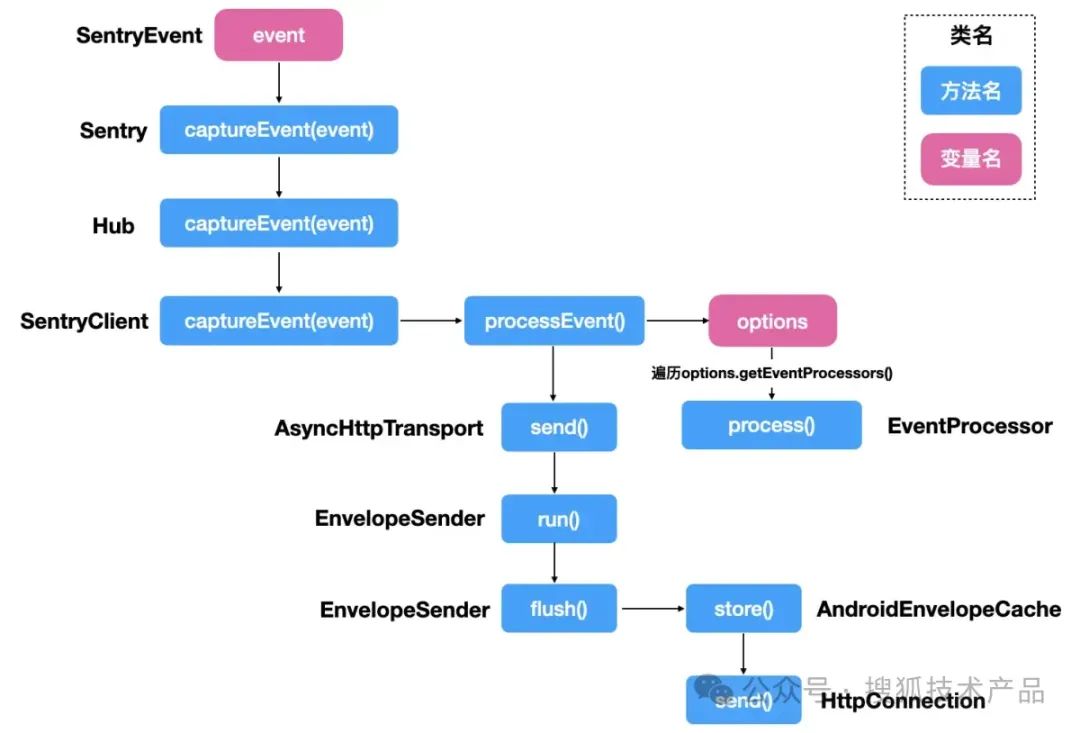
下面我们再来分析一下SentryTransaction的发送流程。
4.2.IHub.captureTransaction()
之前我们在分析ActivityLifecycleIntegration的实现时提到过,在onActivityCreated()作为一个Transaction起始点,在onActivityResumed()时作为这个Transaction统计的终点,通过调用finishAppStartSpan()来进行Transaction的上报。我们先来看看在onActivityCreated()是如何创建一个SentryTransaction的:
//ActivityLifecycleIntegration.java@Overridepublic synchronized void onActivityCreated(final @NotNull Activity activity, final @Nullable Bundle savedInstanceState) {setColdStart(savedInstanceState);addBreadcrumb(activity, "created");startTracing(activity);final @Nullable ISpan ttfdSpan = ttfdSpanMap.get(activity);firstActivityCreated = true;if (fullyDisplayedReporter != null) {fullyDisplayedReporter.registerFullyDrawnListener(() -> onFullFrameDrawn(ttfdSpan));}}继续追踪startTracing()方法:
//ActivityLifecycleIntegration.javaprivate void startTracing(final @NotNull Activity activity) {WeakReference<Activity> weakActivity = new WeakReference<>(activity);if (hub != null && !isRunningTransactionOrTrace(activity)) {if (!performanceEnabled) {activitiesWithOngoingTransactions.put(activity, NoOpTransaction.getInstance());TracingUtils.startNewTrace(hub);} else if (performanceEnabled) {// as we allow a single transaction running on the bound Scope, we finish the previous onesstopPreviousTransactions();final String activityName = getActivityName(activity);final SentryDate appStartTime =foregroundImportance ? AppStartState.getInstance().getAppStartTime() : null;final Boolean coldStart = AppStartState.getInstance().isColdStart();final TransactionOptions transactionOptions = new TransactionOptions();if (options.isEnableActivityLifecycleTracingAutoFinish()) {transactionOptions.setIdleTimeout(options.getIdleTimeout());transactionOptions.setTrimEnd(true);}transactionOptions.setWaitForChildren(true);transactionOptions.setTransactionFinishedCallback((finishingTransaction) -> {@Nullable Activity unwrappedActivity = weakActivity.get();if (unwrappedActivity != null) {activityFramesTracker.setMetrics(unwrappedActivity, finishingTransaction.getEventId());} else {if (options != null) {options.getLogger().log(SentryLevel.WARNING,"Unable to track activity frames as the Activity %s has been destroyed.",activityName);}}});// This will be the start timestamp of the transaction, as well as the ttid/ttfd spansfinal @NotNull SentryDate ttidStartTime;if (!(firstActivityCreated || appStartTime == null || coldStart == null)) {// The first activity ttid/ttfd spans should start at the app start timettidStartTime = appStartTime;} else {// The ttid/ttfd spans should start when the previous activity called its onPause methodttidStartTime = lastPausedTime;}transactionOptions.setStartTimestamp(ttidStartTime);// we can only bind to the scope if there's no running transactionITransaction transaction =hub.startTransaction(new TransactionContext(activityName, TransactionNameSource.COMPONENT, UI_LOAD_OP),transactionOptions);setSpanOrigin(transaction);
//...}}}截取重点部分,创建一个TransactionOptions对象设置各种参数,再封装一个TransactionContext对象记录activityName,之后调用hub.startTransaction()进行上报:
//Hub.java@ApiStatus.Internal@Overridepublic @NotNull ITransaction startTransaction(final @NotNull TransactionContext transactionContext,final @NotNull TransactionOptions transactionOptions) {return createTransaction(transactionContext, transactionOptions);}//Hub.javaprivate @NotNull ITransaction createTransaction(final @NotNull TransactionContext transactionContext,final @NotNull TransactionOptions transactionOptions) {Objects.requireNonNull(transactionContext, "transactionContext is required");ITransaction transaction;if (!isEnabled()) {
//...} else if (!options.getInstrumenter().equals(transactionContext.getInstrumenter())) {
//...} else if (!options.isTracingEnabled()) {
//...} else {final SamplingContext samplingContext =new SamplingContext(transactionContext, transactionOptions.getCustomSamplingContext());@NotNull TracesSamplingDecision samplingDecision = tracesSampler.sample(samplingContext);transactionContext.setSamplingDecision(samplingDecision);transaction =new SentryTracer(transactionContext, this, transactionOptions, transactionPerformanceCollector);// The listener is called only if the transaction exists, as the transaction is needed to// stop itif (samplingDecision.getSampled() && samplingDecision.getProfileSampled()) {final ITransactionProfiler transactionProfiler = options.getTransactionProfiler();transactionProfiler.onTransactionStart(transaction);}}if (transactionOptions.isBindToScope()) {configureScope(scope -> scope.setTransaction(transaction));}return transaction;}根据传入的transactionContext和transactionOptions创建一个SamplingContext对象,调用tracesSampler.sample(samplingContext)获取当前activity的采样率samplingDecision,再创建一个SentryTracer对象transaction。接着获取AndroidTransactionProfiler对象transactionProfiler,调用其onTransactionStart()方法开始跟踪(前面的章节已经讲过了AndroidTransactionProfiler)。onActivityCreated()创建Transaction的过程讲完了,我们再来看看在onActivityResumed()时调用finishAppStartSpan()进行上报的实现:
//ActivityLifecycleIntegration.javaprivate void finishAppStartSpan() {final @Nullable SentryDate appStartEndTime = AppStartState.getInstance().getAppStartEndTime();if (performanceEnabled && appStartEndTime != null) {finishSpan(appStartSpan, appStartEndTime);}}//ActivityLifecycleIntegration.javaprivate void finishSpan(final @Nullable ISpan span,final @NotNull SentryDate endTimestamp,final @Nullable SpanStatus spanStatus) {if (span != null && !span.isFinished()) {final @NotNull SpanStatus status =spanStatus != null? spanStatus: span.getStatus() != null ? span.getStatus() : SpanStatus.OK;span.finish(status, endTimestamp);}}跟踪到SentryTracer. finish()方法:
//SentryTracer.java@Override@ApiStatus.Internalpublic void finish(@Nullable SpanStatus status, @Nullable SentryDate finishDate) {finish(status, finishDate, true);}//SentryTracer.java@Overridepublic void finish(@Nullable SpanStatus status, @Nullable SentryDate finishDate, boolean dropIfNoChildren) {
//...ProfilingTraceData profilingTraceData = null;if (Boolean.TRUE.equals(isSampled()) && Boolean.TRUE.equals(isProfileSampled())) {profilingTraceData =hub.getOptions().getTransactionProfiler().onTransactionFinish(this, performanceCollectionData);}
//...final SentryTransaction transaction = new SentryTransaction(this);final TransactionFinishedCallback finishedCallback =transactionOptions.getTransactionFinishedCallback();if (finishedCallback != null) {finishedCallback.execute(this);}
//...transaction.getMeasurements().putAll(measurements);hub.captureTransaction(transaction, traceContext(), null, profilingTraceData);}}先从options拿到AndroidTransactionProfiler对象再调用其onTransactionFinish()方法封装成ProfilingTraceData(在之前的章节已经介绍过ProfilingTraceData了)。然后创建一个SentryTransaction对象,最后调用 hub.captureTransaction(transaction, traceContext(), null, profilingTraceData)上报事件:
//Hub.java@ApiStatus.Internal@Overridepublic @NotNull SentryId captureTransaction(final @NotNull SentryTransaction transaction,final @Nullable TraceContext traceContext,final @Nullable Hint hint,final @Nullable ProfilingTraceData profilingTraceData) {Objects.requireNonNull(transaction, "transaction is required");SentryId sentryId = SentryId.EMPTY_ID;if (!isEnabled()) {
//...} else {if (!transaction.isFinished()) {
//...} else {if (!Boolean.TRUE.equals(transaction.isSampled())) {
//...} else {StackItem item = null;try {item = stack.peek();sentryId =item.getClient().captureTransaction(transaction, traceContext, item.getScope(), hint, profilingTraceData);} catch (Throwable e) {
//...}}}}return sentryId;}调用了SentryClient的captureTransaction()方法。这个具体流程不讲了,跟captureEvent()类似,只是封装的数据结构不太一样。最终都是调用到AsyncHttpTransport.send()方法,流程一致。
到此为止,Sentry提供的针对SentryEvent和SentryTransaction两种事件的上报已经分析完毕了。
05
定制化APM系统的初步想法
分析完整个Sentry的实现后,我们意识到如果希望定制自己的APM,完全可以以Sentry为base进行一些拓展和改造。比如说根据需求创建自己的Integration为Sentry增加新的能力;创建EventProcessor随事件上报新的参数;重写AndroidTransactionProfiler添加新的性能数据;结合其他三方APM相关库的输出作为附件封装成事件上报等。
总而言之就是将我们希望监测的性能数据与Sentry的基本能力和参数进行绑定,复用Sentry的数据结构,上报到Sentry后台或者其他后台。
06
总结
这篇文章相信分析了Sentry(Android端)实现的具体流程,希望能给大家定制化APM系统一些参考和想法。
